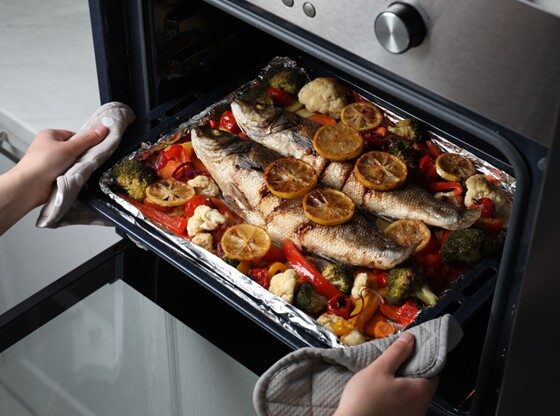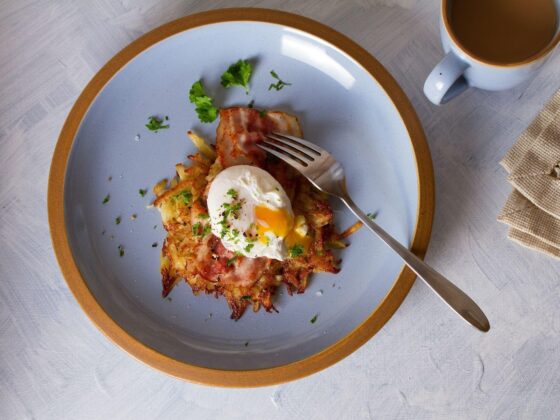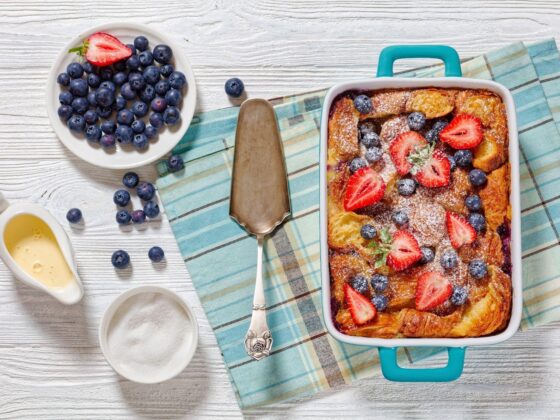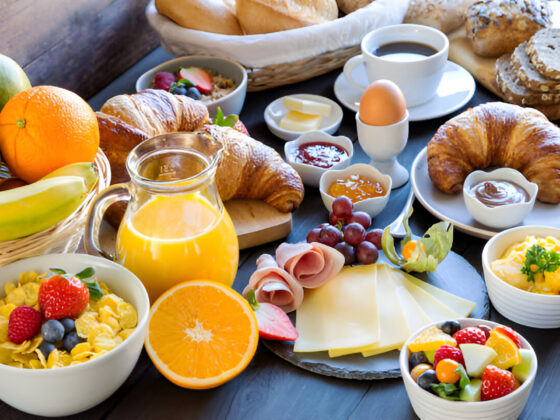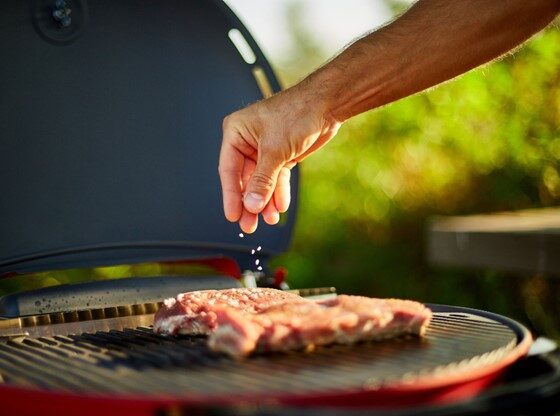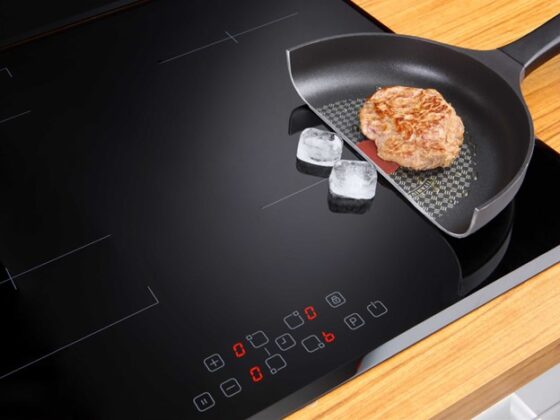Sautéing is a cooking technique that involves quickly cooking small-sized pieces of food over medium-high heat in a shallow pan with a small amount of oil or fat. The method aims to brown the food’s surface while maintaining its internal moisture, resulting in a flavorful and well-textured dish. It is a versatile and efficient cooking method suitable for a wide range of ingredients, making it a go-to for home cooks and professional chefs alike. When you sauté the ingredients, it brings out the natural flavors of them and is commonly used for vegetables, proteins, and aromatic elements in various cuisines.

What items can be Sautéed?
If you are foody, below are some of the ingredients and items that you can easily sauté in a nice frying pan to enhance their flavors and textures:
Vegetables:
- Bell peppers
- Onions
- Mushrooms
- Zucchini
- Spinach
- Asparagus
- Broccoli

Proteins:
- Chicken breast or thigh strips
- Beef strips or cubes
- Shrimp or other seafood
- Tofu or tempeh
- Sausages
- Ground meat
Aromatics:
- Garlic (minced or sliced)
- Ginger (finely chopped)
- Shallots
- Scallions
- Fresh herbs (thyme, rosemary, cilantro)
Others:
- Rice or grains (for stir-fried rice)
- Nuts (such as almonds or cashews)
- Seeds (like sesame seeds)
- Cubes of cheese (for a cheesy sautéed finish)
Choosing a combination of these ingredients allows you to create a wide range of sautéed dishes, from simple side dishes to main courses. Remember to cut ingredients into similar sizes for even cooking and to achieve a harmonious blend of flavors.

The Process of Sautéing
Step 1: Choose the Right Pan:
Opt for a wide, shallow pan with a flat bottom. A skillet or sauté pan with sloping sides works well. This allows for better heat distribution and efficient evaporation.
Step 2: Preheat Carefully:
Preheat the pan over medium-high heat before adding oil. The pan should be hot but not smoking. Use oils with high smoke points, like vegetable or canola oil.
Step 3: Uniformly Size Ingredients:
Cut ingredients into similar sizes for even cooking. This ensures that everything cooks at the same rate and achieves consistent preparation.
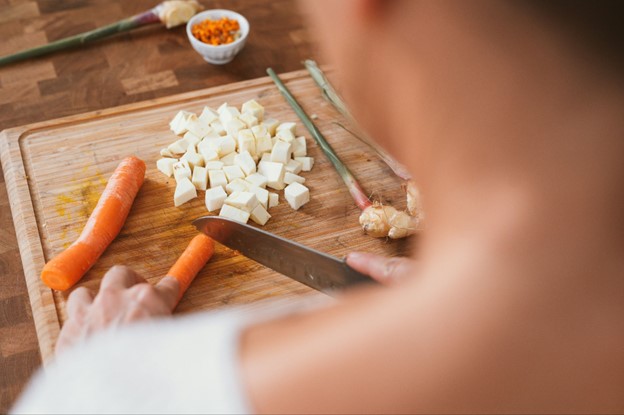
Step 4: Do not Crowd the Pan:
Avoid overcrowding the pan to allow proper heat circulation. Overcrowding can lead to steaming instead of sautéing, resulting in less browning and uneven cooking.
Step 5: Add Ingredients Safely:
Place ingredients in the pan away from you to prevent any splattering. Add items gradually to maintain the pan’s temperature.
Step 6: Ready to Cook:
Start with aromatics like garlic or onions. Add proteins and cook until they develop a golden-brown sear. Finally, add vegetables, stirring frequently to ensure even cooking without overcooking.

Tips for a perfect Sautéing
- Keep ingredients moving with a spatula or toss them in the pan for even cooking.
- Season towards the end to control saltiness; sautéed foods tend to concentrate flavors.
- Finish with fresh herbs, a splash of citrus, or a drizzle of balsamic for added flavor.
By following these steps, you can achieve a well-executed sauté, bringing out the natural flavors of the ingredients while maintaining their textures.

How does choosing the right pan influence the process of sautéing?
Choosing the right pan is crucial for the success of the sautéing process, as it directly affects how the ingredients cook and the overall outcome of the dish. Here is how the choice of pan influences the sautéing process:
Heat Distribution:
- A wide, shallow pan with a flat bottom allows for even heat distribution. This ensures that all parts of the ingredients come in contact with the hot surface, promoting uniform cooking and browning.
Surface Area:
- A larger surface area in the pan allows for more ingredients to be in direct contact with the heat source. This is important for sautéing, as it involves cooking small, bite-sized pieces of food quickly. A crowded pan can lead to uneven cooking and steaming rather than proper sautéing.
Evaporation:
- Sautéing involves high heat and quick cooking, which leads to moisture evaporation. A pan with sloping sides can facilitate the evaporation of excess liquids, helping ingredients brown and caramelize rather than steam.
Tossing and Stirring:
- A pan with sloping sides or a skillet design makes it easier to toss and stir ingredients. This movement is crucial for even cooking and preventing sticking. The shape of the pan allows for efficient flipping and turning of ingredients.
Oil Usage:
- The right pan size allows you to use an appropriate amount of oil without excess pooling. This prevents the food from becoming too greasy while still providing enough fat for browning and flavor enhancement.
Controlled Browning:
- The flat bottom of the pan provides a stable surface for achieving a golden-brown sear on proteins and vegetables. This controlled browning adds depth of flavor and enhances the visual appeal of the dish.
Wrapping up
If we call the process of sautéing a technique to make the ingredients dance with flavors to create masterpieces on our plates, it won’t be incorrect. From the sizzle of a hot pan to the aroma of ingredients coming together, the process of sautéing is an art that transforms the ordinary into the extraordinary.

The Do’s
Choosing the right pan might seem a simple decision, but it acts as a silent conductor in the process of sautéing. The wide, shallow pan becomes our canvas, ensuring each ingredient receives its fair share of the spotlight.
Preheating carefully sets the tone, creating the perfect stage for ingredients to shine. As the pan reaches its optimal temperature, the oils whisper promises of a golden-brown sear, and the kitchen becomes a theater where the cooking outcome is about to be revealed.
Uniformly sized ingredients ensure a harmonious dance of flavors. Each piece, no matter how small, carries the potential to contribute its unique essence to the final masterpiece. And as we cut, chop, and slice, we pave the way for a symmetrical and delectable sautéed creation.
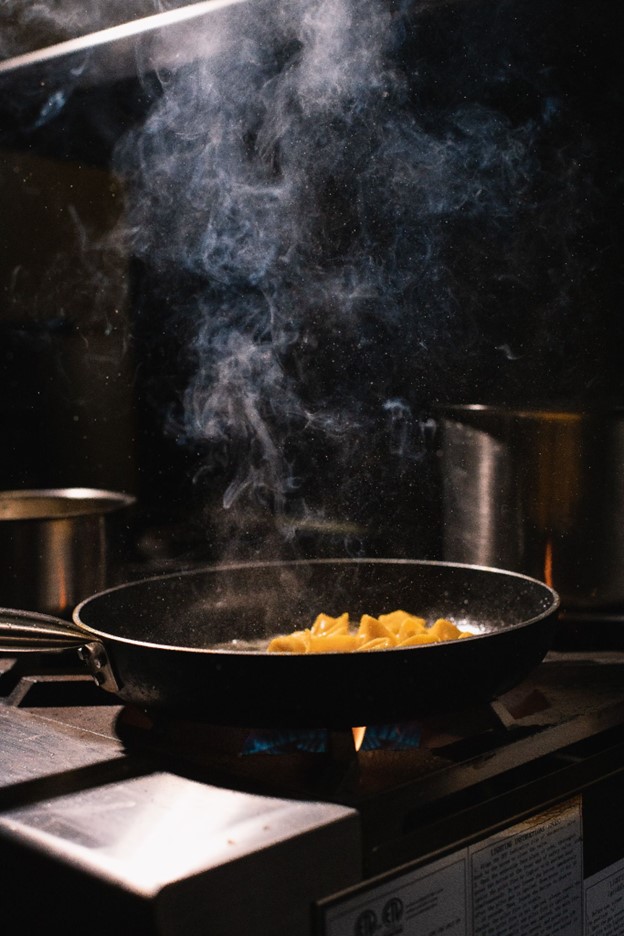
The don’ts
Do not crowd the pan. Allow the ingredients room to breathe, to interact with the heat without knocking each other for space. A crowded pan may lead to the burning of items. It can even present some uncooked pieces and we will not be able to see the browning we crave for.
Adding ingredients safely, away from you, is the graceful entry of each performer onto the pan. A gentle introduction ensures that the performance begins without any unwarranted splatters, leaving you in control of the sautéing process.
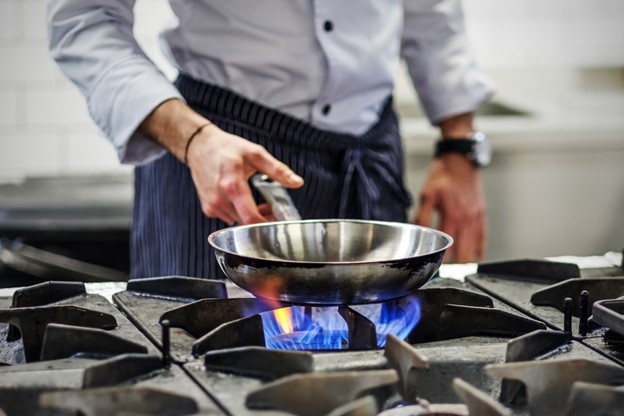
As the final curtain draws near, we find ourselves at the climax – the sautéing process in full swing. Stirring, tossing, and a cautious touch of seasoning bring our creation to life. The spatula becomes the conductor’s baton, directing the flavors to meld and harmonize, while the pan, our orchestra pit, resonates with the sizzling rhythm of a cooking masterpiece.
In the grand finale, the sautéed dish emerges, a result of the careful steps taken – the right pan, careful preheating, uniformly sized ingredients, uncrowded quarters, and safe ingredient additions. With a flourish of fresh herbs, a squeeze of citrus, or a drizzle of spices, the sautéed creation is ready to take a bow.

